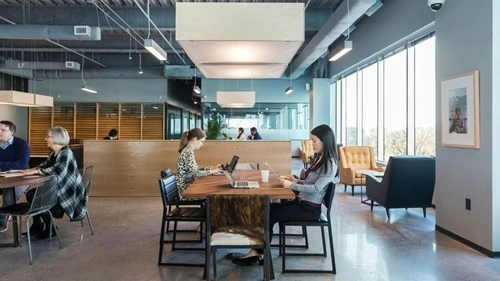Creating a vibrant, functional co-working space isn’t just about cool decor or ping-pong tables. It’s about delivering amenities that truly serve the needs of your members—and doing it profitably. That’s where financial data comes into play. By analyzing the right numbers, operators can make informed decisions on which amenities to add, keep, or improve.
This post dives into how finance data, from occupancy rates to ROI assessments, can guide co-working space operators to make smart, sustainable choices.

Why Amenities Matter in Co-Working Spaces
Amenities aren’t extras. They’re expectations. Whether it’s high-speed internet, private call booths, coffee bars, or yoga rooms, these perks can make or break someone’s decision to stay with you.
But not all amenities are equally valued—and not all pay off. That’s where financial data helps separate the must-haves from the money-wasters.
Start with Accurate Financial Reporting
First things first: garbage in, garbage out. If your numbers are wrong, your decisions will be too.
Solid, accurate financial reporting gives you real-time insights into cash flow, costs, and profitability. This foundation allows operators to:
- Track overhead for specific services
- Understand amenity-related expenses
- Compare costs across multiple locations
- Forecast budgets for new amenities
It’s not just about having numbers. It’s about trusting them.
Benchmarking: What Metrics Matter Most?
Certain financial benchmarks can provide instant insight into how well your space is operating. According to OfficeRnD, these are key:
RevPAF (Revenue Per Available Foot)
This tells you how efficiently your space is generating income. Higher RevPAF = better utilization. If your lounge space isn’t contributing, maybe it needs a revamp.
Revenue Per Member
Are you generating enough from each user? Compare this to the cost of amenities they access. If a coffee machine eats $300/month but drives member happiness (and retention), maybe it’s worth it.
Occupancy Rates
Underutilized rooms or areas could either be repurposed or better promoted. Finance data helps you spot patterns and rethink what that extra room should offer.
Track Usage with Behavioral and Spatial Analytics
Once you know the cost side, flip it. Look at usage.
Behavioral data, as The Coworking Spaces explains, helps uncover how and when amenities are used. Do people crowd the espresso machine at 8:30 am? Are phone booths always full between 1-3 pm?
You can collect this data via:
- Wi-Fi logins
- Booking systems
- Access control
- Sensor tech
With this, operators can optimize schedules, add more units, or remove what goes unused.
Example:
If the in-house gym gets only 3 check-ins a day, is it worth keeping? Maybe that space becomes rentable meeting rooms instead.
The ROI of Shared Services
Amenities like printers, podcast studios, or kitchenettes can either drain or drive value. The trick is calculating ROI.
Here’s a simple model:
- Total Cost of Amenity: Include initial setup, maintenance, and monthly operations.
- Usage Data: Track how many members use it and how often.
- Impact Factor: Survey or interview members to gauge satisfaction and retention.
- Cost per Use vs. Value: Divide total cost by number of uses; compare that to how much value it adds (e.g., retention).
Data from Coworking Insights shows that utilization metrics identify the most- and least-used amenities. Low use with high cost? Cut it. High use, low cost? Double down.
Using Predictive Tools for Smarter Planning
Why react when you can plan?
According to Allwork.Space, predictive analytics can spot trends before they hit. You can:
- Forecast high-demand periods
- Spot seasonal preferences
- Schedule preventative maintenance
Say your heating system tends to break in December. Predictive tools help schedule repairs before complaints start rolling in.
Collect and Act on Member Feedback
Numbers tell part of the story. The rest? People.
Using finance data with qualitative feedback gets you the full picture. Combine metrics with direct input:
- Run quarterly member surveys
- Create a suggestion box (digital or physical)
- Tie feedback to revenue patterns
For example, CompareCamp highlights how financial data can refine pricing and amenities in tandem. If members rave about soundproof call booths and your revenue per member spikes, it’s clear what to do next.
Real-World Example: Budgeting for a New Podcast Studio
Let’s say your members frequently ask for podcasting space.
You run the numbers:
- Initial setup: $5,000
- Monthly maintenance & upgrades: $300
- Expected monthly usage: 60 sessions
- Added member revenue (retention or premium fees): $1,000/month
You break even in 6 months. Plus, the studio draws more creators to your space. That’s a data-backed win.
Final Thoughts
Co-working spaces thrive when they serve member needs and make financial sense. With tools like RevPAF, behavioral analytics, ROI assessments, and feedback loops, operators can confidently decide where to invest next.
It’s not just about more amenities. It’s about smarter ones.
When your decisions are rooted in accurate, insightful financial data, you build spaces that work—for your members and your bottom line.